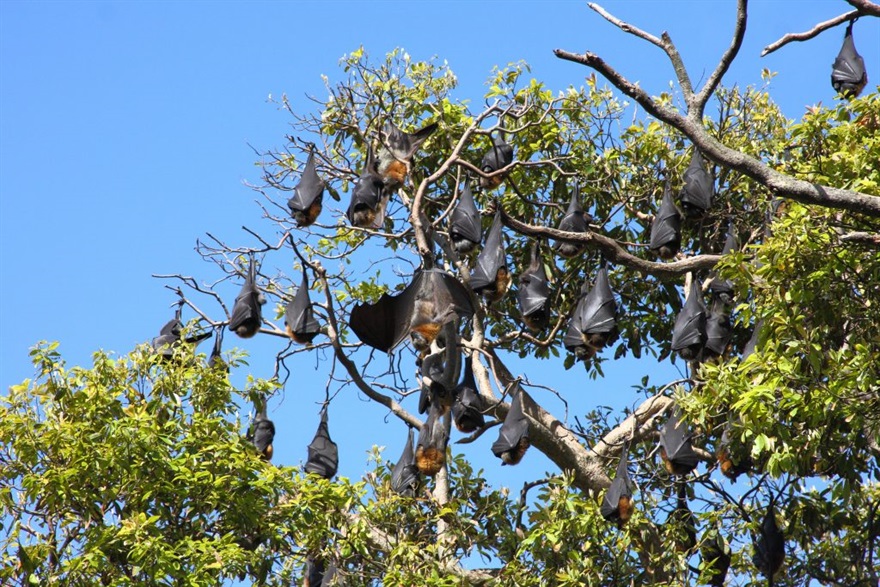Flying Foxes

A Grey-headed Flying-fox camp has established in Riverglade Reserve along Tarban Creek. Flying-fox numbers are estimated to be around 6,500 (counted August 2018), 2,650 (counted April 2021) and 8,000 (counted April 2023) – a small camp compared to others across Sydney. Flying-fox camps are generally located in eastern Australia.
Grey-headed Flying-foxes are large pollen, nectar and fruit eating bats which roost during the day in large canopy colonies. They are important pollinators and seed dispersers. They will travel large distances often up to 30km from their camp to forage. Flying-fox numbers are likely to fluctuate as they migrate in response to the seasonal availability of food resources.
Grey-headed Flying-foxes are relatively long lived mammals, up to 20 years in the wild, with the average age of reproductive animals being between 6 and 10 years. They give birth once a year, usually to only one young. Mating commences in January with conception occurring in April or May, followed by a 6 month gestation period, after which most young are born in October or November. The noise and smell is related to their behaviour i.e. mainly males are defending territories throughout the night. This noise is at a peak from around February to mid-May.
Grey-headed Flying-foxes are listed as a threatened species (vulnerable to extinction) under NSW and Australian legislation because of declining numbers (30% decline over 10 years between 1989 and 1999) and key threats such as habitat loss and urban conflict. Therefore a Plan of Management and licence is required to undertake actions that would impact on the camp.
Hunter’s Hill Council has prepared a Camp Management Plan for the Tarban Creek Grey-headed Flying-fox camp which will guide the future management of the camp.
Flying-fox-Camp-Management-Plan-Tarban-Creek.pdf(PDF, 2MB)
Grey-headed Flying-foxes pose no health risks unless you are bitten or scratched, so never directly handle them. Australian bat lyssavirus and Hendra virus are two diseases associated with Flying-foxes however the risk of transmitting disease to humans is extremely low. Coming into contact with faecal matter or urine will not transmit disease and provided basic hygiene measures are applied there is no reason for the community to be concerned.
Council is continuing to monitor the camp. If you find an injured Flying- fox, do not handle them and please contact WIRES on 1800 303 417 or Sydney Wildlife on 02 9413 4300 for assistance.
For further information visit living-with-grey-headed-flying-foxes.